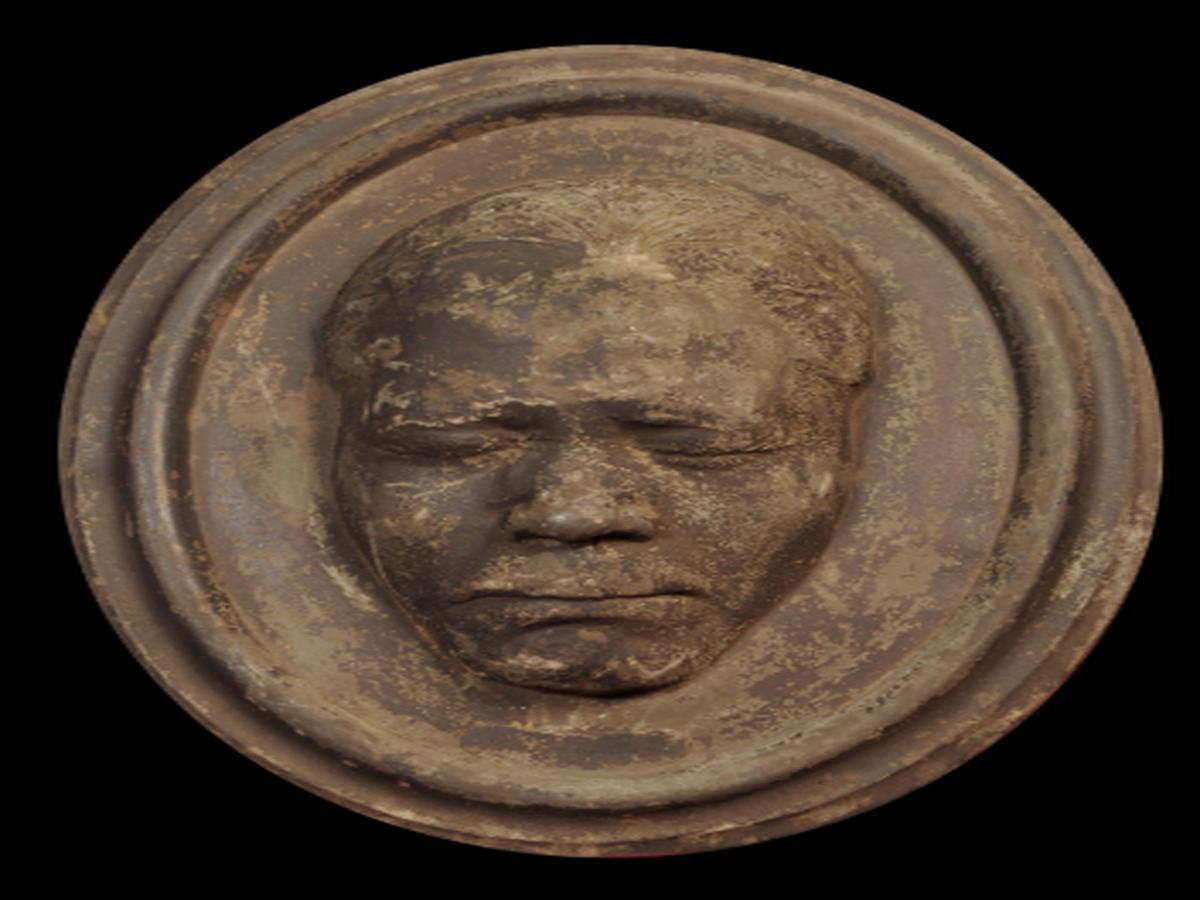State
Tribe Name
Art Type
short description
A woman mould face is Bibi from Ladakh, India, which is a very remarkable illustration of the Bhot tribes' craftsmanship and cultural memory. This artefact consists of a long, oval-shaped metal cast designed in a way to retain the likeness of Bibi. Unlike several moulds which use separate materials for framing, face and frame are cast together in one single piece, showcasing a high skill level in artisanal ability. The top part of this mould is engraved with the name of the woman and the origin, again personal but revealed regionally, Ladakh. The Bhot tribe belongs to the Tibetan-origin ethnic group, mainly living in Ladakh along with other Himalayan regions. Following deep-rooted traditions of Buddhism in their lives,
Thumbnail

Filter Postion
Left
Filter Background
Off
Theme
Filter Header Image

content
Image

description
A woman mould face is Bibi from Ladakh, India, which is a very remarkable illustration of the Bhot tribes' craftsmanship and cultural memory. This artefact consists of a long, oval-shaped metal cast designed in a way to retain the likeness of Bibi. Unlike several moulds which use separate materials for framing, face and frame are cast together in one single piece, showcasing a high skill level in artisanal ability. The top part of this mould is engraved with the name of the woman and the origin, again personal but revealed regionally, Ladakh. The Bhot tribe belongs to the Tibetan-origin ethnic group, mainly living in Ladakh along with other Himalayan regions. Following deep-rooted traditions of Buddhism in their lives,
Bhots are culturally rooted in Tibet through their language, religion, attire, and art. Their art forms like metal casting, religious iconography, etc., are primarily inspired by Tibetan Buddhist aesthetics and philosophy. These types of face moulds were probably meant to be made as memorials to commemorate venerable people in the society. They can be found in either household shrines or in the collective shrine places and would facilitate remembrance, honor, and connection with someone ever revered in memory. An integrative cast of the face and frame represents a casement wholly, symbolizing possibly the indivisible union of identity and heritage in that culture. This mould becomes a testament of Bhot dedication to art-imbued memory. It opens up, through art, valuable personal and collective identity for Himalayan tribes, especially the Bhots of Ladakh.
Bhots are culturally rooted in Tibet through their language, religion, attire, and art. Their art forms like metal casting, religious iconography, etc., are primarily inspired by Tibetan Buddhist aesthetics and philosophy. These types of face moulds were probably meant to be made as memorials to commemorate venerable people in the society. They can be found in either household shrines or in the collective shrine places and would facilitate remembrance, honor, and connection with someone ever revered in memory. An integrative cast of the face and frame represents a casement wholly, symbolizing possibly the indivisible union of identity and heritage in that culture. This mould becomes a testament of Bhot dedication to art-imbued memory. It opens up, through art, valuable personal and collective identity for Himalayan tribes, especially the Bhots of Ladakh.
Image Mode
landscape
promoted
On
Verified
Off
